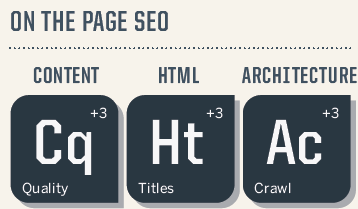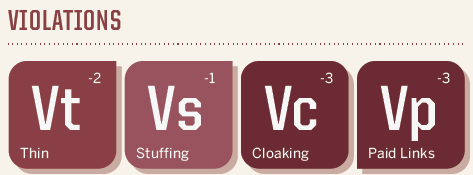What Is SEO or Search Engine Optimization?
SEO stands for “search engine optimization.” It is the process of getting traffic from the “free,” “organic,” “editorial” or “natural” listings on search engines. All major search engines such as Google, Yahoo and Bing have such results, where web pages and other content such as videos or local listings are shown and ranked based on what the search engine considers most relevant to users. Payment isn’t involved, as it is with paid search ads.
Search Engine Optimization (SEO) is complex and often misunderstood. When first using SEO, or contemplating whether to use SEO, it is especially important to not only understand what SEO can do for you, but also how to verify its usefulness.
As SEO grows in popularity and more people recognize its importance, there will be an ever increasing group of SEO scams and misunderstandings. This is to be expected. Already we are finding that there is more bad information than accurate concerning this industry, and even more myths. Please familiarize yourself with the content in this section. If you do not find what you need for making a decision as to whether to start SEO or not, please leave a comment below.
SEO
The Periodic Table Of SEO Ranking Factors is designed to illustrate the most important things that can help you gain traffic from search engines such as Google and Bing. This is our companion guide designed to explain the table in more depth and provide a tutorial into the world of search engine optimization.Search Engine Ranking Factors
There are four major groups of SEO ranking factors:- On The Page Ranking Factors
- Off The Page Ranking Factors
- Violations
- Blocking

Factors Work In Combination
No single SEO factor will guarantee search engine rankings. Having a great HTML title won’t help if a page has low quality content. Having many links won’t help if they are low quality links. But having several positive factors can increase the odds of success. As for negative factors, they obviously can worsen the odds.On The Page Factors
 On The Page search ranking factors are those that are entirely within the publisher’s own control. What type of content do you publish? Are you providing important HTML clues that help search engines with determining relevancy? How does your site architecture help or hinder search engines?
On The Page search ranking factors are those that are entirely within the publisher’s own control. What type of content do you publish? Are you providing important HTML clues that help search engines with determining relevancy? How does your site architecture help or hinder search engines?Off The Page Factors
 Off The Page ranking factors are those that publishers cannot directly control. Search engines use these because they learned long ago publisher signals alone don’t help relevancy. Some publishers will try to make themselves seem more relevant than they are, for example.
Off The Page ranking factors are those that publishers cannot directly control. Search engines use these because they learned long ago publisher signals alone don’t help relevancy. Some publishers will try to make themselves seem more relevant than they are, for example.More important, with billions of web pages to sort through, looking only at on-the-page clues isn’t enough. More signals are needed to better estimate what are the best pages for any particular search.
Violations
 Make no mistake. Search engines want people to perform SEO. They provide help directly about SEO techniques and encourage this, because good SEO can improve their listings.
Make no mistake. Search engines want people to perform SEO. They provide help directly about SEO techniques and encourage this, because good SEO can improve their listings.However, there are some techniques that they deem “spam” or “black hat,” acts that if you do could results in your pages getting a ranking penalty or worse, being banned from the search engines entirely.
Blocking
 Blocking is a new class of ranking signal. This is where searchers themselves may decide they don’t like pages from a particular web site, even if those web sites don’t violate any traditional spam rules.
Blocking is a new class of ranking signal. This is where searchers themselves may decide they don’t like pages from a particular web site, even if those web sites don’t violate any traditional spam rules.Blocking has a big impact on what the individual who blocks sees, but it also has an impact on what every searcher sees.
Weighting
All the factors we show are weighted on a scale of one to three, as shown in the top right corner of each factor. Three is deemed most important, something that you either should especially pay attention to, because it has a bigger impact than other factors.That doesn’t mean that factors weighted only two or one aren’t important. They are, or they wouldn’t have made the chart. It’s just that they are off less importance in relatively speaking, in terms of everything on the chart.
The weighting is also our opinion, based on what search engines have said, surveys done of SEO and our own experience in watching the space over time. They’re not perfect; not everyone will agree with them. But we think they’re a useful general guide.
Violations and Blocking factors are also weighted in negative numbers, with negative three being the worst.
“Missing” Factors & The Guide’s Philosophy
Some experienced SEOs may be wondering why some factors aren’t shown. How come ALT text or bolding words aren’t included as important HTML factors, for example?The answer is that we don’t think those things are that important, relatively speaking. We’re not trying to encompass every possible signal (Google has over 200 of them) and sub-signals (Google has over 10,000 of those).
Instead, the goal with the Periodic Table Of SEO Ranking Factors and this online companion guide help those new to SEO focus on the big picture and perhaps help some experienced SEO hit the “reset” button if they’re feeling a bit lost among the trees of the SEO forest.
That’s why this guide doesn’t try to get into the debate over whether having your most important keywords be at the beginning or end of an HTML title tag. Nor are we trying to assess if H1 header tags carry more weight than H2 tags.
We’re purposely avoiding being so specific because such things can easily become overkill. Instead, we want you to understand that your pages should have descriptive titles, that indicating page structure with header tags may help, and topping things off with easily deployed meta description tag is a good idea Do these things, and you’d probably addressed 90% of the most important HTML-related factors.
Similarly, it’s not whether a good reputation on Twitter is worth more than on Facebook. Instead, it’s trying to help people understand that having social accounts that seem reputable in general, which attract a good following and generate social shares, is a good that may help you with your search efforts.

No comments:
Post a Comment